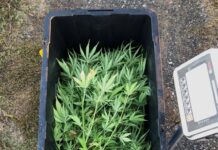A peculiar behavior observed in certain bird species, known as kleptotrichy, involves the systematic theft of hair or fur directly from livestock to construct nests. This practice, documented primarily in the subtropics and temperate regions, demonstrates a surprising level of opportunistic resourcefulness in avian nesting strategies.
The Mechanics of Kleptotrichy
Kleptotrichy, derived from the Greek words for “stealing” and “hair,” is most commonly observed in bird families that rely on soft, insulating materials for nest construction. Species like titmice and certain finches actively pluck hair or fur directly from the bodies of grazing animals – including cattle, sheep, goats, and even domestic poultry. The birds approach livestock calmly, often landing on their backs or flanks to methodically extract strands of hair.
This isn’t a random act of scavenging. Birds exhibit a clear preference for livestock hair over other available nesting materials, such as plant fibers or feathers. Livestock hair provides superior thermal insulation, particularly important in cooler temperate climates. The stolen material also appears to offer better protection against parasites and predators.
Why Livestock?
The prevalence of kleptotrichy in livestock-rich environments suggests a pragmatic adaptation to resource availability. Livestock represent a concentrated, readily accessible source of high-quality nesting material. Unlike wild mammals, livestock generally do not react aggressively to the gentle plucking of hair, allowing birds to harvest materials with minimal risk.
The behavior is not limited to specific bird families. While titmice and finches are frequently observed engaging in kleptotrichy, other species have also been documented stealing hair from livestock. This suggests that the practice is a flexible behavioral adaptation rather than a species-specific trait.
Environmental Factors
The frequency of kleptotrichy appears to correlate with environmental conditions. In regions with harsh winters or limited natural nesting materials, birds are more likely to rely on livestock hair for nest construction. The practice may also be more common in areas where human activity has reduced the availability of suitable nesting sites.
Implications for Livestock
While kleptotrichy does not typically cause harm to livestock, excessive plucking can lead to minor skin irritation or discomfort. In some cases, birds may target areas already affected by parasites or wounds, exacerbating the condition. However, the overall impact on livestock health is negligible.
A Curious Adaptation
Kleptotrichy remains a relatively understudied phenomenon. Further research is needed to fully understand the evolutionary drivers behind this behavior and its broader ecological implications. The practice highlights the remarkable adaptability of birds and their ability to exploit unconventional resources in pursuit of nesting success.
In conclusion, kleptotrichy is a fascinating example of opportunistic behavior in birds, demonstrating their ability to leverage livestock as a readily available source of high-quality nesting material. This curious adaptation underscores the complex interplay between avian behavior, environmental conditions, and the availability of resources

































